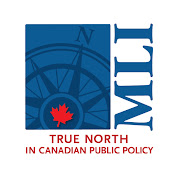Welcome to the sixth chapter of our R Programming Insights series, where we delve into the fascinating realm of text mining and natural language processing (NLP) using R. This chapter is designed to equip you with the skills and techniques necessary to analyze textual data, extract meaningful insights, and apply machine learning models to text. As you continue your journey into data science, mastering text mining and NLP will open up a wealth of opportunities to work with unstructured data, which constitutes a significant portion of data available today.
In this chapter, we begin by introducing the fundamental concepts of text mining, including the challenges and opportunities presented by unstructured data. Text data is inherently different from numerical data, requiring specialized techniques for processing and analysis. We explain the importance of pre-processing steps such as tokenization, stemming, and lemmatization, which are essential for transforming raw text into a structured format suitable for analysis. By understanding these preprocessing techniques, you will be better prepared to work with textual data in a variety of contexts.
We then move on to explore the methods of text representation, a critical aspect of text mining and NLP. Representing text in a numerical format that a machine learning model can understand is a key challenge in this field. We introduce you to the concept of the bag-of-words model, term frequency-inverse document frequency (TF-IDF), and word embeddings. You will learn how to implement these text representation techniques in R, enabling you to transform text data into meaningful features that can be used for further analysis and modeling.
Sentiment analysis is one of the most popular applications of text mining, and in this chapter, we guide you through the process of building a sentiment analysis model in R. Sentiment analysis involves determining the sentiment expressed in a piece of text, whether positive, negative, or neutral. We demonstrate how to use lexicon-based approaches and machine learning techniques to classify the sentiment of textual data. By the end of this section, you will be able to build your own sentiment analysis models and apply them to real-world datasets, such as social media posts, reviews, or customer feedback.
In addition to sentiment analysis, we also cover topic modeling, another powerful technique in text mining. Topic modeling allows you to uncover the underlying themes or topics within a large corpus of text. We introduce you to Latent Dirichlet Allocation (LDA), one of the most widely used topic modeling algorithms. You will learn how to implement LDA in R, interpret the results, and use the insights gained to explore the structure of your text data. Topic modeling is particularly useful for tasks such as document clustering, summarization, and content analysis.
As with previous chapters, we emphasize the importance of hands-on practice through a project-based approach. This chapter includes a comprehensive project where you will apply text mining and NLP techniques to a real-world dataset. This practical experience is designed to reinforce the concepts covered in the video and provide you with the skills needed to tackle text mining challenges in your own work. By completing this project, you will gain confidence in your ability to analyze and model textual data using R.
We continue to highlight the importance of reproducibility in data science, especially when working with complex text mining workflows. You will learn how to document your text mining and NLP analyses using R Markdown, creating dynamic reports that integrate code, output, and narrative text. These reports can be easily shared and reproduced by others, ensuring transparency and reliability in your work. We demonstrate how to produce professional-quality reports that effectively communicate your text mining findings and insights.
Throughout this video, we encourage you to explore additional resources and engage with the R community. The field of text mining and NLP is rapidly evolving, with new tools and techniques emerging regularly. By staying connected with the community, you will keep abreast of the latest trends and best practices, while also benefiting from the wealth of knowledge and experience shared by other practitioners.
In conclusion, Chapter 6 of our R Programming Insights series is designed to provide you with a comprehensive understanding of text mining and natural language processing. From pre-processing and text representation to sentiment analysis and topic modeling, this chapter equips you with the tools and techniques needed to analyze unstructured text data effectively. The project-based approach ensures that you gain practical experience and confidence in applying these methods to real-world text data.









![Benchmark of a new generation - AUDI E concept [Video]](https://aimarketingshowcase.com/wp-content/uploads/2024/11/mp_549609_0_1393354532BenchmarkofnewgenerationAUDIhiresjpg.jpg)
![Inc. Names Arbor Scientia Group as a 2024 Power Partner Award Winner | PR Newswire [Video]](https://aimarketingshowcase.com/wp-content/uploads/2024/11/mp_549414_0_6734d1c4bdfe5imagejpg.jpg)
![STALKER 2 Peaks At Over 100,000 Players On Steam [Video]](https://aimarketingshowcase.com/wp-content/uploads/2024/11/mp_553291_0_STALKER2HeartofChornobylStriderTrailermp4snapshot0155000scaledjpg.jpg)
![Snowflake Price Levels to Watch as Stock Pops 20% on Strong Earnings, Outlook [Video]](https://aimarketingshowcase.com/wp-content/uploads/2024/11/mp_553287_0_SNOWChartb731f5498de6465c8d5c36669db5615egif.gif)
